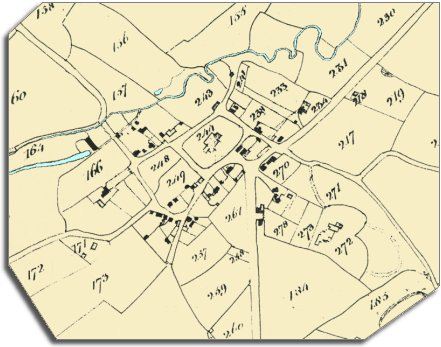The map below is based on a section
of the tithe map for the parish of
Guilsfield, and it gives us a good
idea of the layout of the village in the early years of Queen Victoria's
reign.
As you can see, each house and plot of land is numbered. We have removed
some of the numbers to make it easier to see the details of the map.

TITHE MAPS
In Victorian times almost everyone had to pay tithes to the Church of England. At the beginning of the reign the tithe became a tax on your property. The maps were drawn to see what property everybody had
